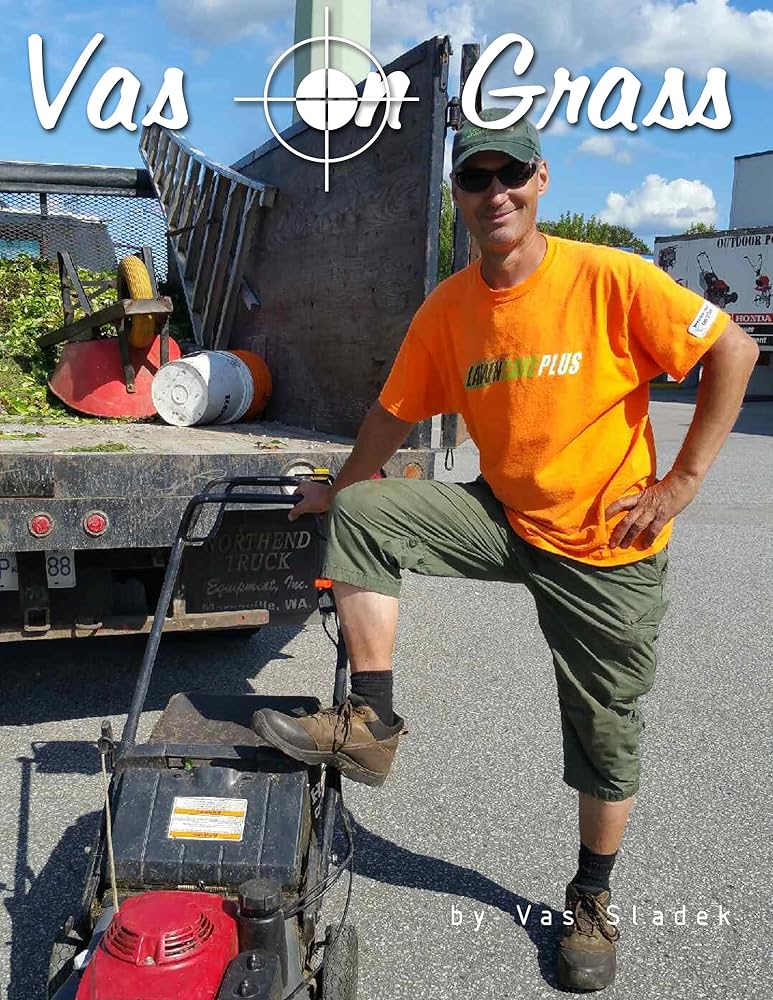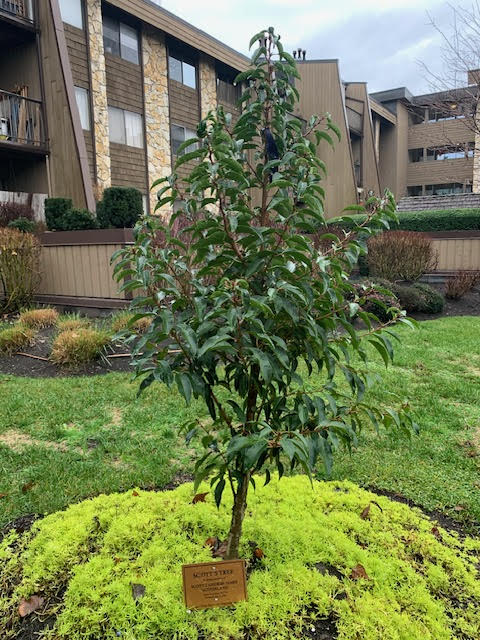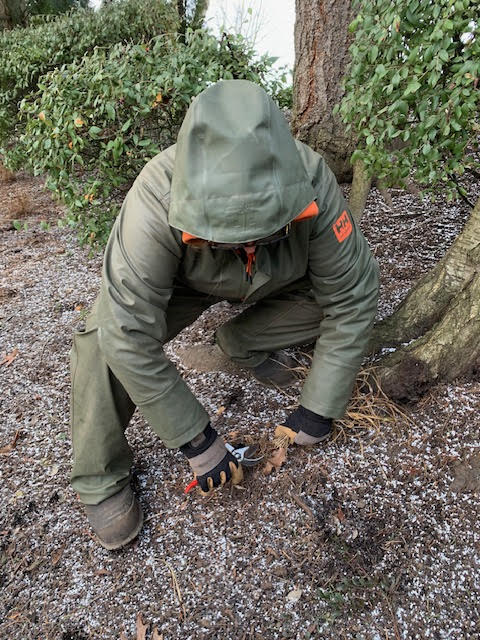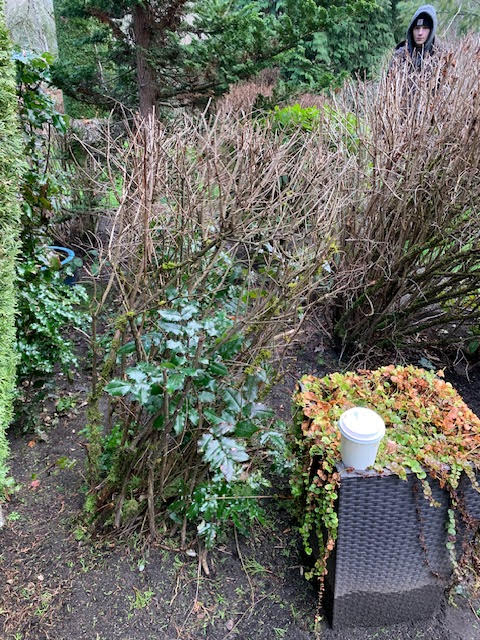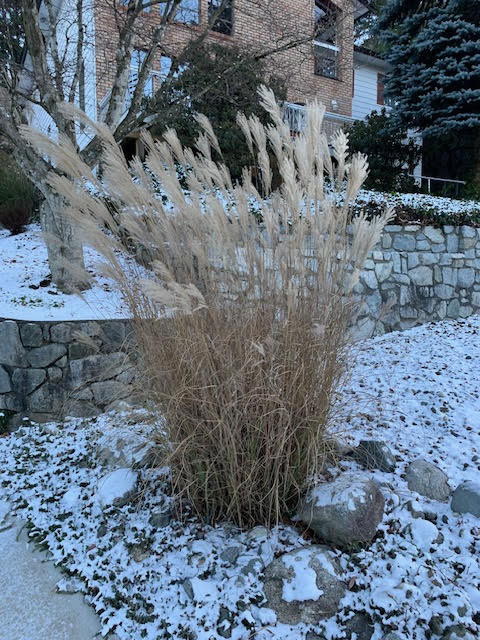Hands bleeding
One of the trees we looked at during my winter plant identification course walk was a huge weeping beech tree (Fagus). It’s located near the main building inside the Van Dusen Botanical Gardens. It’s a beautiful, massive, weeping specimen.
In our multi-family strata complexes, where there is less space available, it’s common to see columnar beech specimens which stay upright and narrow. All you have to do is prune them back into shape once in a while.
It wasn’t hard to find the leathery brown leaves; there were piles of them by the rock wall. So I collected a few and now I’m pressing them in one of my books at home. Looking at leaves in winter obviously helps you identify the tree. Assuming the leaves are really from the tree you’re looking at. Always collect as much information as you can.
Buds
Tree buds are obviously the key identifying feature in winter. And here I have a lot of bad experience. Years ago in White Rock, my task was to thin out beech trees that had previously only been power sheared. It was a bit slow because beeches have this habit of fusing their branches.
That’s another key identifying feature; and it makes pruning slow and annoying because the branches you want to remove, may be fused with neighboring branches. That makes it difficult to extract them and could lead to unintended large holes in your tree.
Blood on my hands
By far the worst beech bud feature is its sharpness. I didn’t pay any attention to this in the beginning. I knew it was a beech tree and I made a lot of mess. So when it came to removing the branches I lost a lot of blood when my fingers collided with the sharp buds. I couldn’t believe how sharp and dangerous the buds were. I literally had blood on my hands.
That’s why it’s very unlikely I will ever forget beech trees and their sharp, pointy buds. Beeches are beautiful trees, yes. I especially like their fuzzy seed capsules and the seeds inside them. We found some in the leaf litter at Van Dusen. But do be careful when handling beech branches because the buds are super sharp. I think you need heavy duty gloves to handle them.





